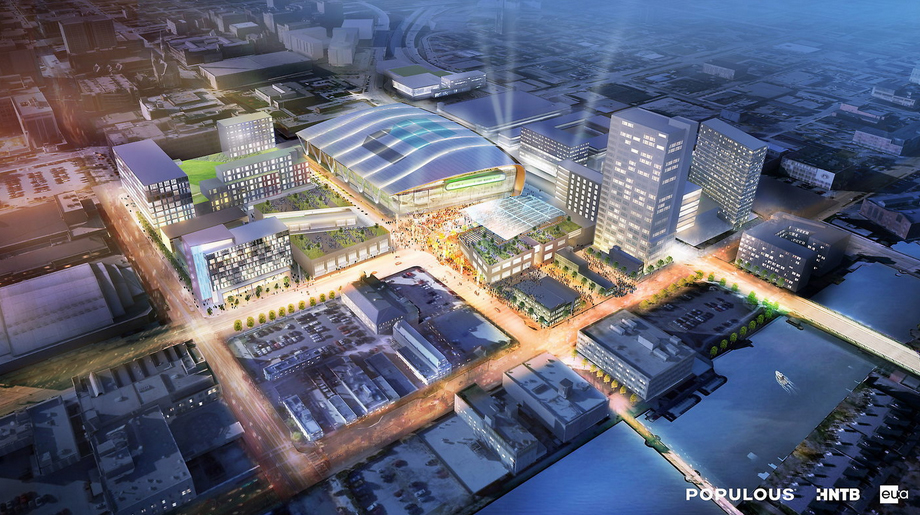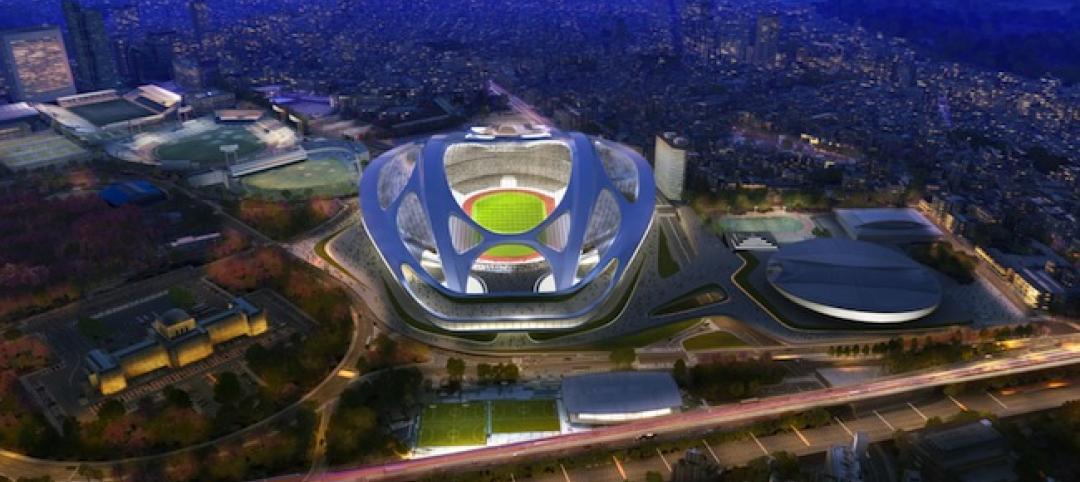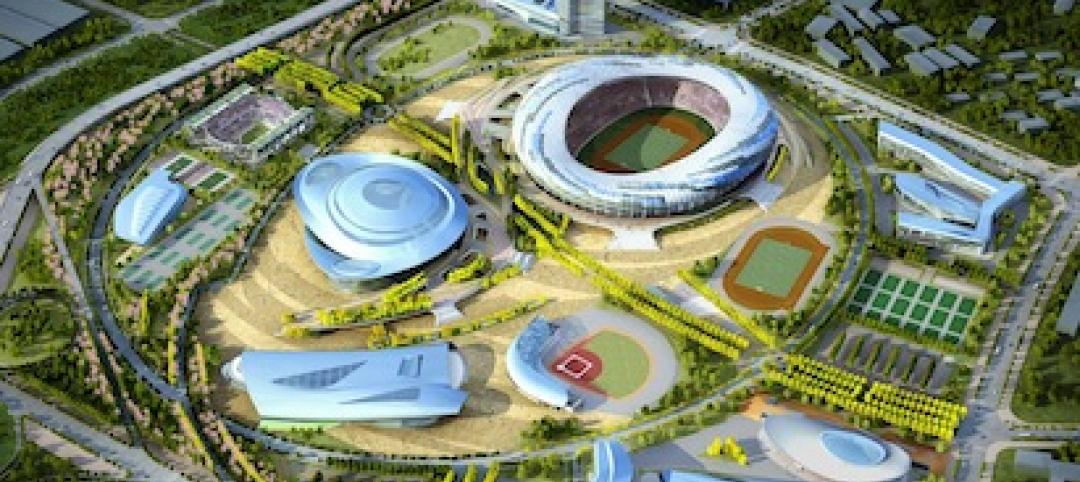The Milwaukee Bucks are one step closer to remaining in Wisconsin after the state voted this week in favor of spending $250 million in public funds on a new arena, according to ESPN.
BD+C has covered the proposed arena. Created by Milwaukee firm Eppstein Uhen Architects and global firm Populous, the venue will be built in downtown Milwaukee. Its design draws inspiration from both Lake Michigan, which borders Milwaukee, and from aspects of basketball, like high-arcing free throws. It is estimated to cost $500 million.
Funding a new arena has been an issue for the small market NBA team. Billionaires Wesley Edens and Marc Lasry purchased the Bucks in 2014 with the vow of keeping the team in the city. The NBA, however, said that the Bucks would need a new arena plan in place by 2017. Without a deal, the league would buy back the team and re-sell it, possibly to owners who would relocate it to either Seattle or Las Vegas.
Residents that opposed the arena plan cited the problems that arise when the government financially supports private sports entities, and referenced Miller Park. The Milwaukee Brewers' retractable roof stadium was publicly funded. Built in the late 1990s, it is still being paid off today.
The upside to a new arena is that the state still gets to recieve income tax from players and staff, and that the venue could bring new development, like entertainment and commercial spaces, residential buildings and parking facilities, to the area around the stadium. Most importantly, the state gets to keep the franchise that won the 1971 NBA Finals and currently has up-and-coming players like Jabari Parker and Giannis Antetokounmpo (and head coach Jason Kidd) on the roster.
The bill now heads to Governor Scott Walker for his signature. Walker has been working with state officials to reach a deal and is expected to sign it.
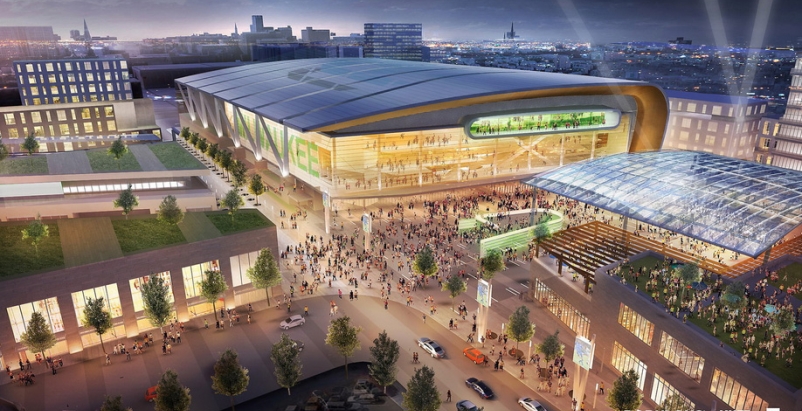
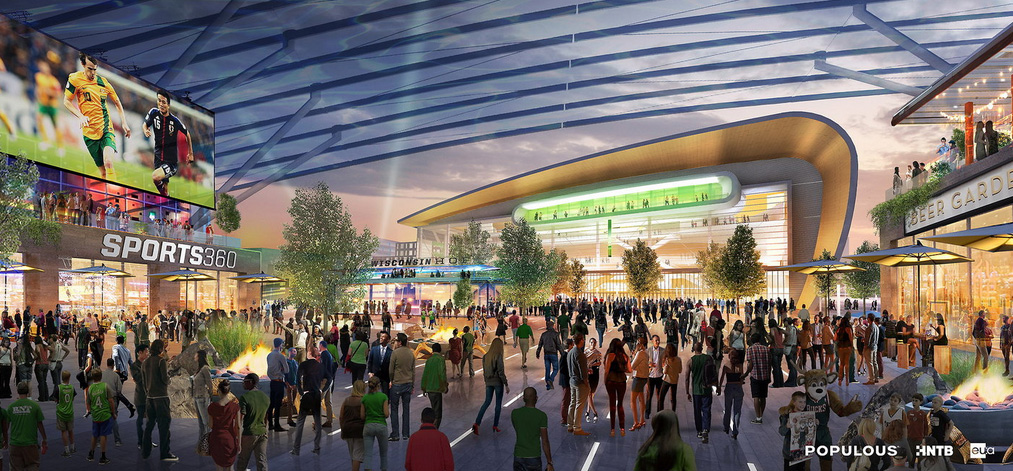
Related Stories
| Jun 12, 2014
Austrian university develops 'inflatable' concrete dome method
Constructing a concrete dome is a costly process, but this may change soon. A team from the Vienna University of Technology has developed a method that allows concrete domes to form with the use of air and steel cables instead of expensive, timber supporting structures.
| Jun 11, 2014
Esri’s interactive guide to 2014 World Cup Stadiums
California-based Esri, a supplier of GIS software, created a nifty interactive map that gives viewers a satellite perspective of Brazil’s many new stadiums.
| Jun 4, 2014
Construction team named for Atlanta Braves ballpark
A joint venture between Barton Malow, Brasfield & Gorrie, Mortenson Construction, and New South Construction will build the Atlanta Braves ballpark, which is scheduled to open in early 2017. Check out the latest renderings of the plan.
| Jun 2, 2014
Parking structures group launches LEED-type program for parking garages
The Green Parking Council, an affiliate of the International Parking Institute, has launched the Green Garage Certification program, the parking industry equivalent of LEED certification.
| May 29, 2014
7 cost-effective ways to make U.S. infrastructure more resilient
Moving critical elements to higher ground and designing for longer lifespans are just some of the ways cities and governments can make infrastructure more resilient to natural disasters and climate change, writes Richard Cavallaro, President of Skanska USA Civil.
| May 22, 2014
Just two years after opening, $60 million high school stadium will close for repairs
The 18,000-seat Eagle Stadium in Allen, Texas, opened in 2012 to much fanfare. But cracks recently began to appear throughout the structure, causing to the school district to close the facility.
| May 20, 2014
Kinetic Architecture: New book explores innovations in active façades
The book, co-authored by Arup's Russell Fortmeyer, illustrates the various ways architects, consultants, and engineers approach energy and comfort by manipulating air, water, and light through the layers of passive and active building envelope systems.
| May 19, 2014
What can architects learn from nature’s 3.8 billion years of experience?
In a new report, HOK and Biomimicry 3.8 partnered to study how lessons from the temperate broadleaf forest biome, which houses many of the world’s largest population centers, can inform the design of the built environment.
| May 16, 2014
Toyo Ito leads petition to scrap Zaha Hadid's 2020 Olympic Stadium project
Ito and other Japanese architects cite excessive costs, massive size, and the project's potentially negative impact on surrounding public spaces as reasons for nixing Hadid's plan.
| May 13, 2014
First look: Nadel's $1.5 billion Dalian, China, Sports Center
In addition to five major sports venues, the Dalian Sports Center includes a 30-story, 440-room, 5-star Kempinski full-service hotel and conference center and a 40,500-square-meter athletes’ training facility and office building.


